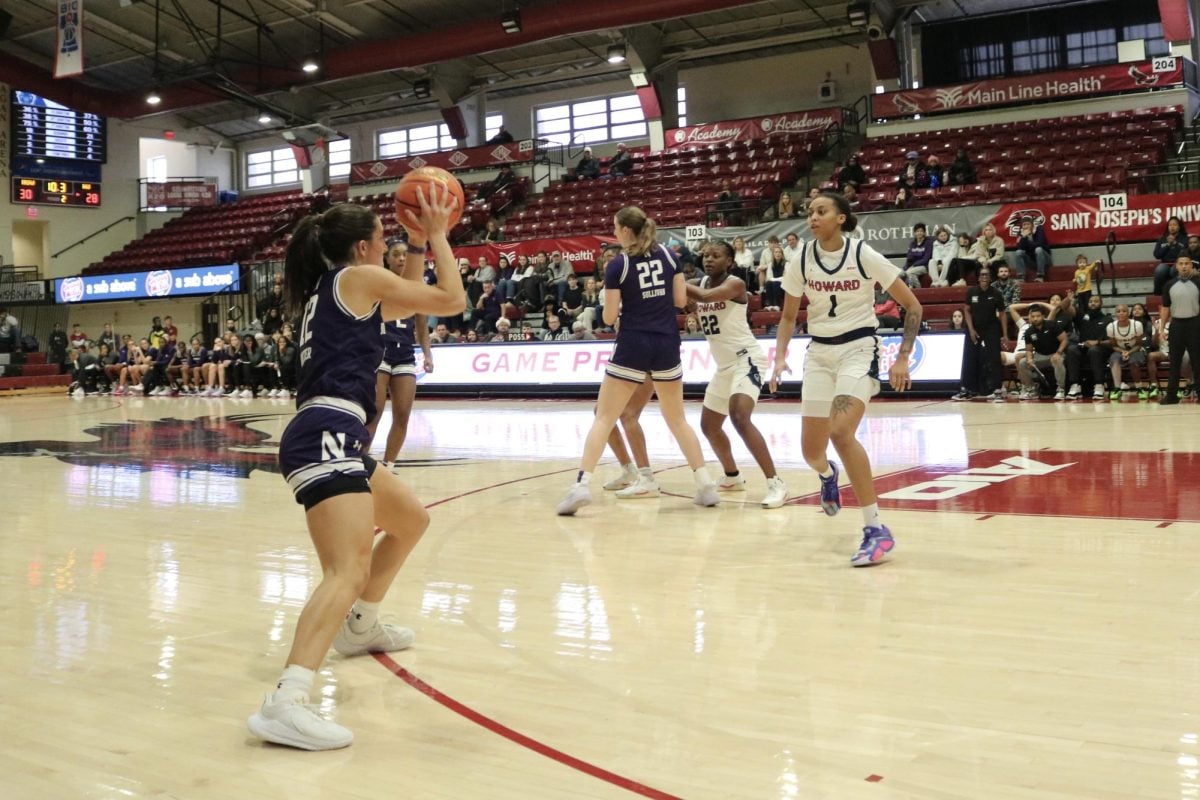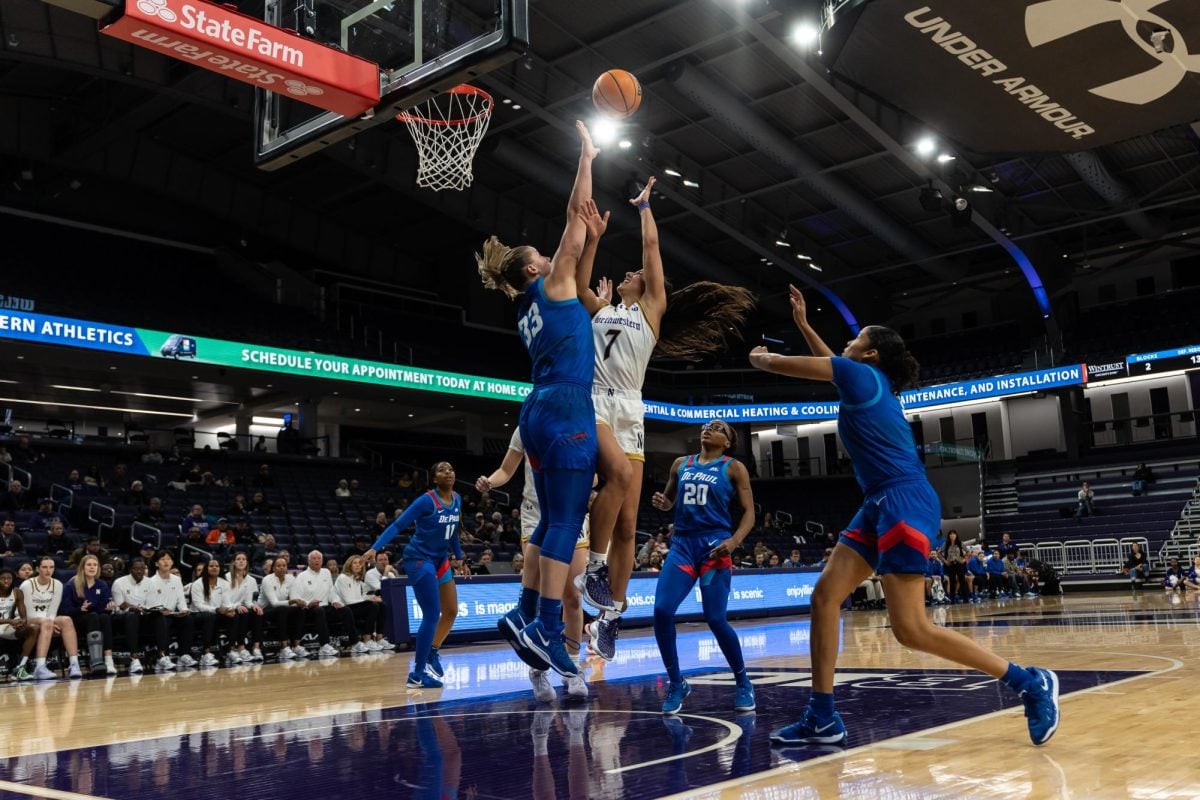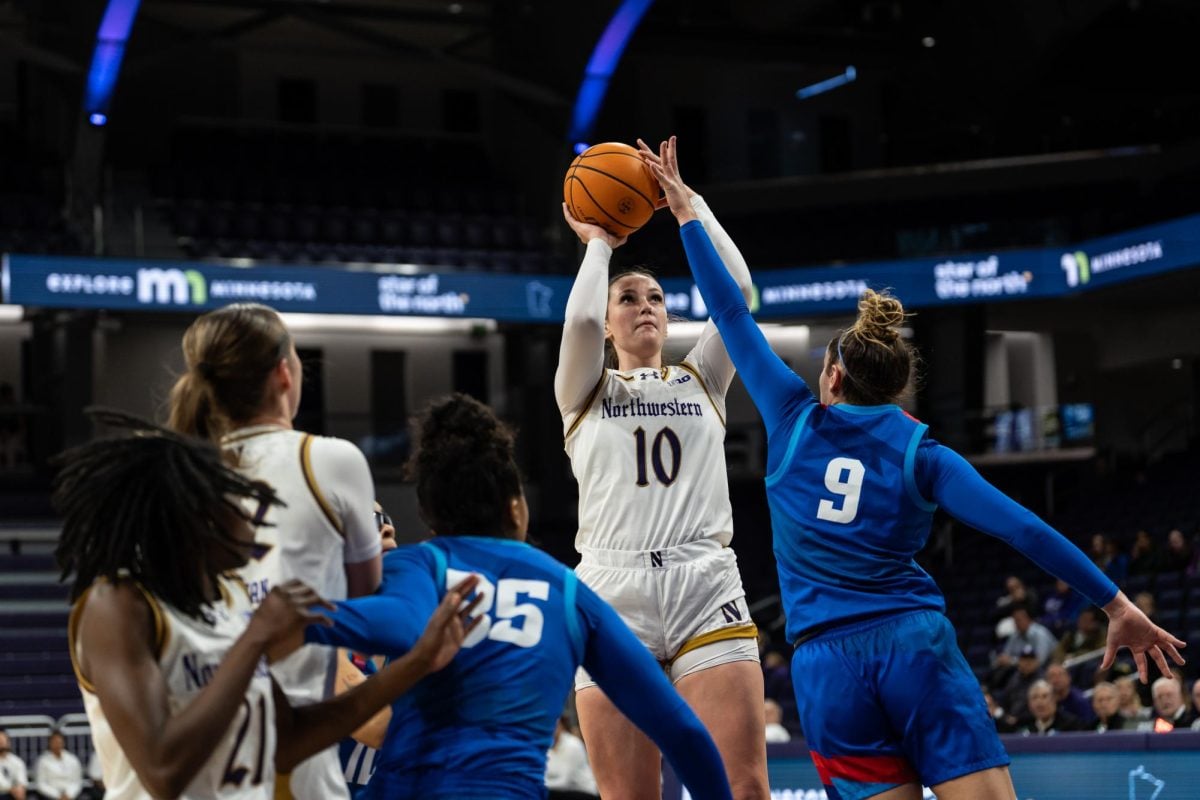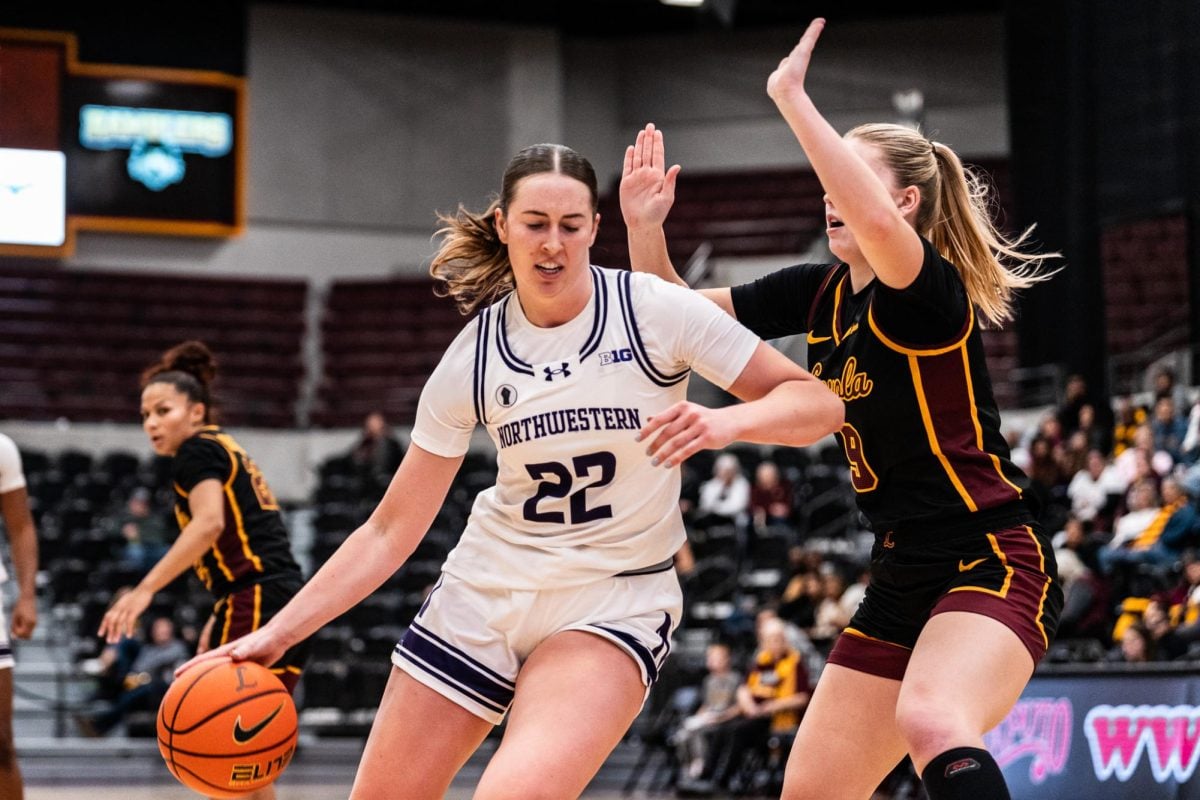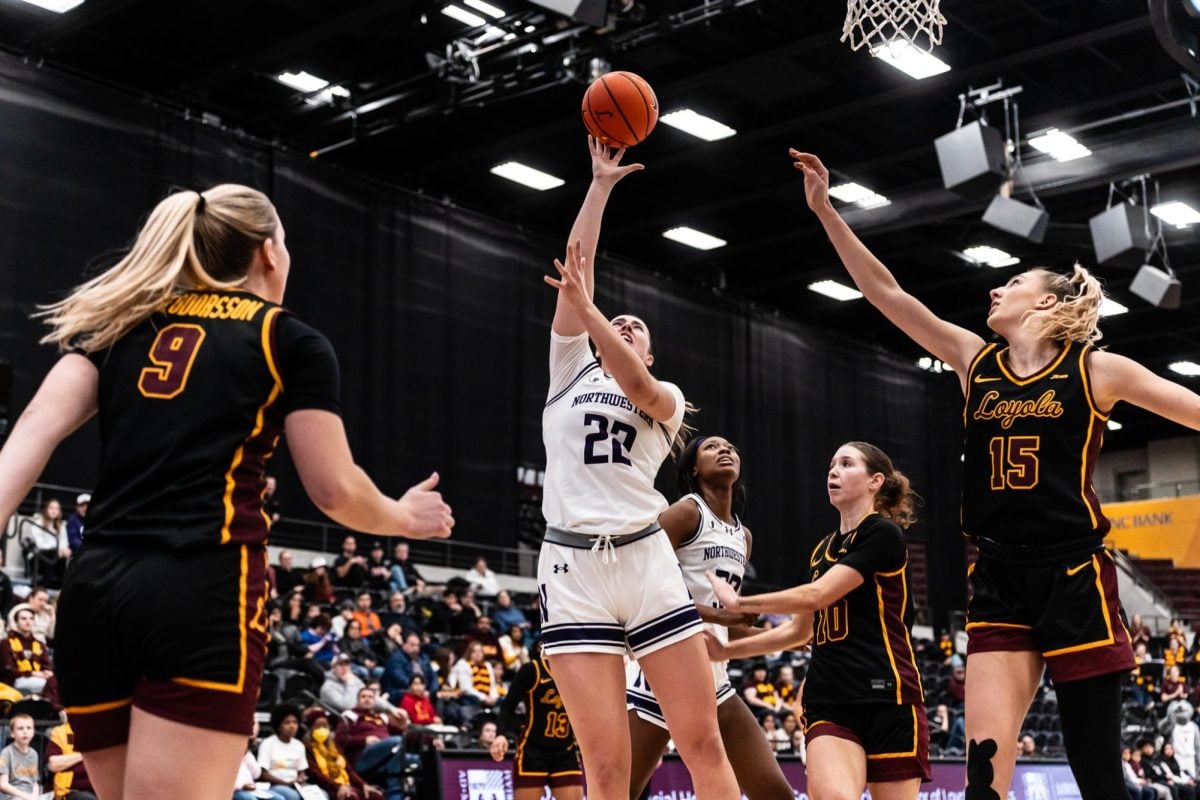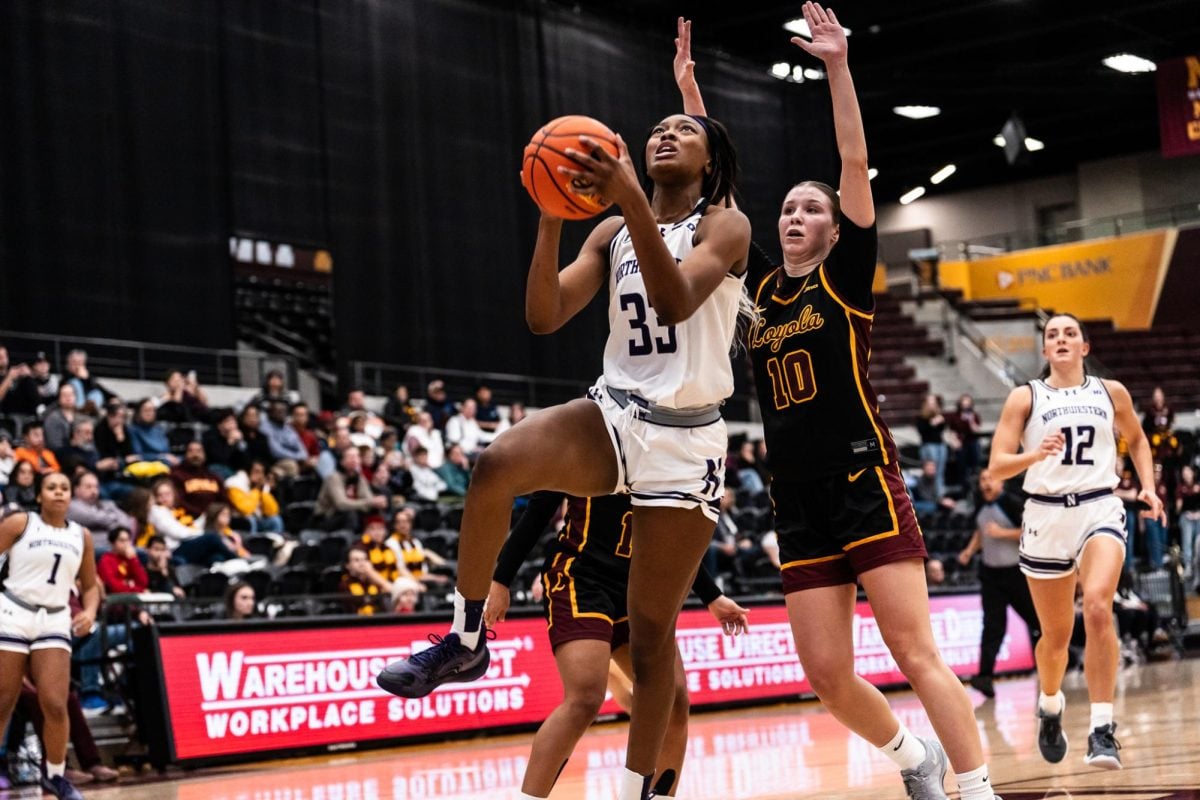After completing her freshman season at Florida, in which she received little playing time, sophomore guard Tailor Jones elected to transfer to Northwestern. Beyond the matter of court time, Jones had another reason for transferring: Florida is coached by Amanda Butler, and she wanted a male coach.
“The reason why I wanted a male coach is because I’ve been coached by a male my whole life,” Jones said. “I just responded to them better than I did a female. I had a female coach my junior year when I went to Whitney Young (Magnet High School), and it just wasn’t the best situation, so I knew that if I were to transfer, that one of my things that I would look for is being coached by a male.”
So Jones chose Northwestern with coach Joe McKeown. After sitting out last season due to NCAA transfer rules, she has averaged 3.1 points per game with 3.6 assists and 4.1 boards per contest in an average of 25.6 minutes of playing time.
Jones said she believes that male coaches coach their teams to play a more aggressive style, similar to men’s teams.
“At Florida, we were sort of a half-court set system team, while here it’s more like transition, getting up the floor, push the ball, push and pull, push and pull,” Jones said. “(McKeown) gives you more freedom to just play.”
Butler declined to comment on Jones’ interpretations of her coaching style.
Many do not share Jones’ sense that McKeown’s maleness makes him a better coach, including McKeown himself.
“Coaches just coach the way they know,” McKeown said. “I can only speak for me and the places I’ve coached, but we just tried to coach the team in front of us and tried to adjust to the players that we had.”
Junior forward Brittany Orban said whatever tendencies a male coach might have to coach his team like a men’s team would probably wear off with more experience coaching women.
“At least with our coach, he’s coached in the women’s game for so long, they kind of acclimate themselves to the system,” Orban said. “They learn the proper ways of instructing girls over guys.”
Women’s college basketball is full of examples of successful female coaches, including two-time NCAA champion Tara VanDerveer of Stanford and the all-time winningest coach in NCAA basketball history, Pat Summitt of Tennessee.
“In our profession, there are a lot of great coaches, male and female,” McKeown said. “There are some coaches, male and female, that aren’t as successful.”
Jones said she is less impressed with Summitt’s coaching skills than her ability to bring top-tier talent into the Tennessee program.
“She’s successful because, one, she recruits All-Americans,” Jones said. “That always helps. Two, she’s one heck of a coach. I definitely do feel like she does hold the reins on them a little bit, but at the same time, because she has such talented players, they are able to play at that fast pace. She gives them a little more freedom to do that.”
Summitt’s Volunteers have won eight national championships. She has been named the NCAA Coach of the Year seven times.
Beth Bass, CEO of the Women’s Basketball Coaches Association said Summitt’s record demonstrates more than just successful recruiting.
“It’s pretty well-documented that Pat’s the winningest coach, male or female, in basketball,” Bass said. “I don’t know exactly where Tailor’s going there.”
Connecticut’s women’s basketball coach Geno Auriemma is something of a foil to Summitt. His aggressive style of play led the Huskies on a 90-game winning streak, setting a new college basketball record.
Jones’ preference for male coaches is strong enough that she said she would “definitely” be concerned for the future of NU women’s basketball if hypothetically McKeown were to leave the program and be replaced with a woman.
She said, from her experience, female coaches are less inclined to separate interpersonal relationships from the game.
“Women tend to hold grudges,” Jones said. “What happens on the court, stays on the court. That’s a man’s philosophy. At least that’s what I’m getting from coach McKeown. Whereas when I was at Florida, what happened on the court was still a problem off the court. She held on to whatever mistake, or whatever you did on the court. I just really didn’t like that.”
Jones gave an example of a situation she thought might occur at Florida. She said that during practice a player might get frustrated and “combative,” snapping at the coach.
“She would have taken that personally and would have given you attitude, or something like that, off of the court,” Jones said. “I feel like, as a male coach, they would address you after practice and be like ‘OK, so what was up with that? Let’s talk about this. Let’s talk this through.'”
Purdue coach Sharon Versyp and Iowa coach Lisa Bluder declined to comment on Jones’s characterization of female coaches.
Bass said she thought Jones’ frustration with Butler might have less to do with communication than court time. Jones played a total of just 47 minutes during her freshman year with Florida, appearing in 12 games.
“It looks to me, on the outside looking in, like it’s about the all-mighty playing time,” Bass said. “She might have been disgruntled.”
When Jones made having a male coach a priority in transferring, she actually didn’t narrow her list of possible schools much. According to the NCAA, when the organization began administering women’s sports in 1981, most of the nearly 4,800 women’s teams then were coached by women. The NCAA statistics from the 2007-08 academic year, the most recent year of available data, show that men now coach 60.2 percent of women’s teams.
Bass said the decline in female coaches could be attributed to struggles to achieve a work-life balance along with the increased esteem of women’s sports.
“It’s harder on females to have a family,” Bass said. “That’s contributing to a lot of women leaving the profession. The other thing is it’s gotten to be so advantageous. There’s been more money and prestige and visibility in women’s sports that a lot of men are coming to coach women’s sports.”
McKeown, who is a member of the WBCA, said he hopes his players are prepared to enter the coaching field when their playing careers are over.
“When you coach a women’s college basketball team,” he said, “part of your goal is to help them have opportunities, if it’s a field they want to pursue.”
Bass warned that Jones’ views on female coaches might harm her if she ever chooses to enter the coaching profession.
“If she wants to coach, she better watch out,” Bass said. “She might be cutting her nose off to spite her face.”
Though men constitute a slight majority of coaches within women’s athletics, opportunities for female coaches on men’s teams are still rare, or almost nonexistent. Bernadette Locke Mattox became the first woman to serve as an assistant coach in Division I men’s basketball, working under coach Rick Pitino at Kentucky for four years.
McKeown said he didn’t “see any reason why” a woman couldn’t coach a men’s basketball team.
“If you can earn the trust of your players, whether you’re male or female,” he said, “they’re going to play hard for you.”
